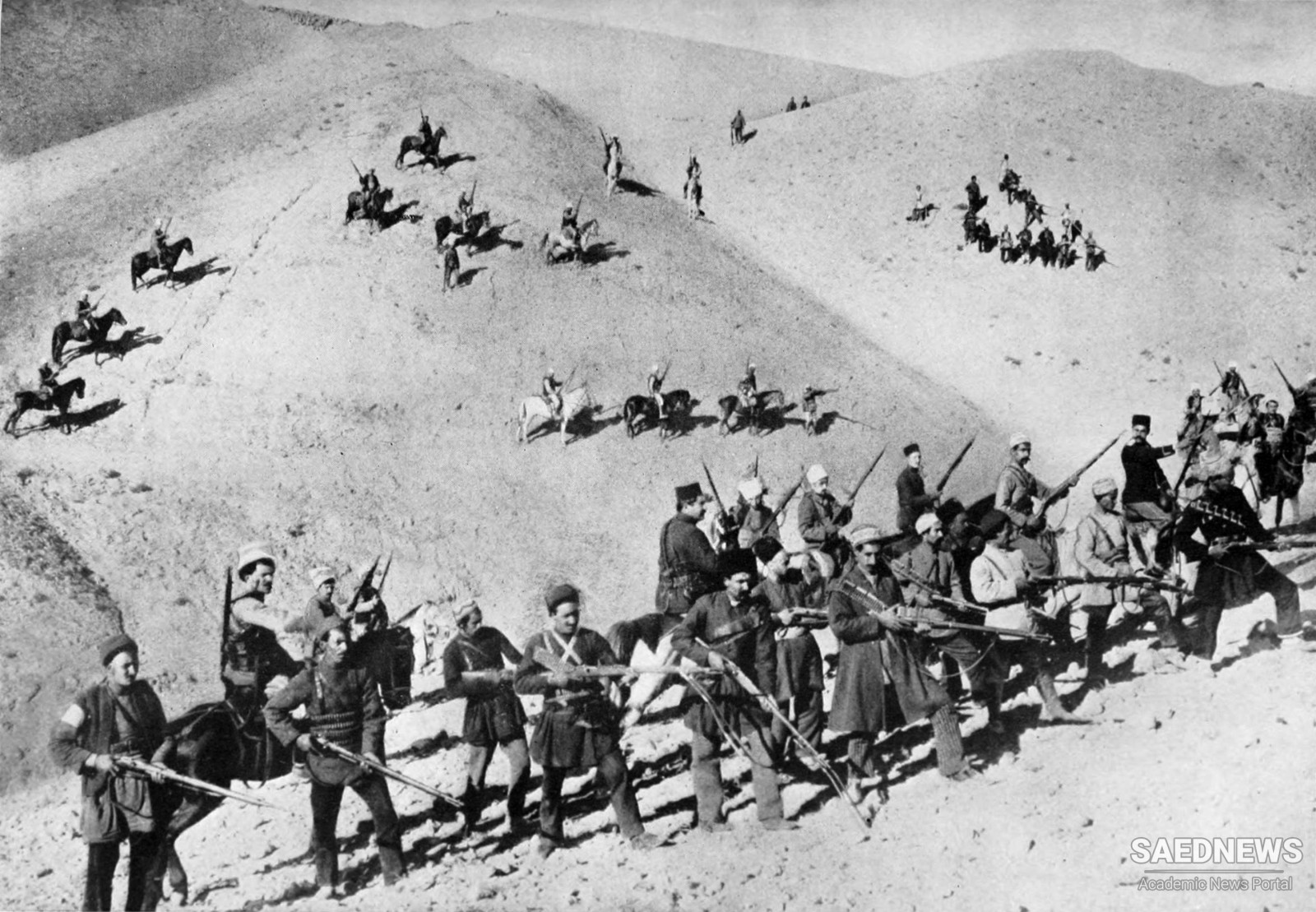The tribes diverted British troops from Iraq to Khuzestan and blocked British lines of communication between Tehran and the Persian Gulf ports. Aft er the nationalists departed Tehran, the British reached an agreement with the shah’s government to establish a new Iranian force with up to eleven thousand men to maintain order in southern Iran. Gen. Sir Percy Sykes was put in command of the unit, which came to be called the South Persia Rifl es. Sykes, a few British offi cers and NCOs, and a company of Indian soldiers landed at Bandar Abbas in March 1916 with a large load of arms and ammunition to begin operations. Sykes immediately started to recruit Iranians to fill the ranks while various pro-British tribes and provincial offi cials helped to pacify the south.
After the provisional government fled to Ottoman territory, most of the nationalist forces withdrew from Shiraz, and roughly eight thousand pro-British fighters armed by Sykes and led by the former governor of Fars Province, Qavam ol- Molk, met litt le resistance as they recaptured the city in the last week of April. Meanwhile, in March the Germans had left Kerman, their primary base for agents in the east, and Bakhtiari tribesmen and local officials there, sensing the improving British position, disarmed the nationalists and welcomed Sykes and a small rifl es detachment when they arrived in June.
Sykes then conducted a series of mostly uneventful marches, reaching Yazd in August, Esfahan in mid- September, and Shiraz by November. Having gained the Iranian government’s formal recognit Sykes planned to recruit local men and create brigades for the Shiraz, Kerman, and Bandar Abbas regions. Col. J. N. Merrill, an American who had helped establish the Treasury Gendarmerie for Shuster and then advised the Government Gendarmerie, was recruited to help build the South Persia Rifl es and later served with the Kerman brigade. At the start of December Sykes reported that he had 2,000 infantry, 450 cavalry, 2 artillery pieces, and a machine gun in Fars Province; 1,100 infantry and cavalry and 4 guns around Kerman; and 150 troops at Bandar Abbas.
After the fall of Kut in late April 1916, some of the southern tribes, spurred by Wassmuss and his agents, were briefly emboldened to go after British interests. The British conducted what they considered mopping up operations through the summer and fall, but many tribes continued to resist. The Qashqai att acked a Rifles garrison at Kazerun, between Shiraz and Bushehr, and stripped it of its weapons in mid-December. Tangistani, Shahkutan, and Borazjani tribesmen captured another Rifles’ outpost a week later and closed the mountain road between Shiraz and Bushehr. The Qashqai could fi eld at least 5,000 fighters while other nearby tribes could provide several thousand more to threaten and harass the 2,500 men of Syke’s Fars Brigade and prevent it from opening the road. When pressed, the tribes fell back to their mountain redoubts, which were marked by sheer cliff s and honeycombed with caves. British forces dispatched to the Kazerun region could not dislodge them.
The Imperial General Staff in London was reluctant to divert resources from the British drive to Baghdad and advised Sykes to focus on holding Shiraz. Sykes gained a breathing space when winter weather reduced the number of att acks by the tribes through February, and he used this period to concentrate on training his forces. In the spring of 1917 the British craft ed an agreement to end Qashqai raids, which freed Sykes to turn against the other tribes. The South Persia Rifles’ operations became more punitive, directly att acking the tribal strongholds, destroying crops, and seizing livestock to deprive the tribal chiefs of the means to sustain conflict. Nearly all of the restive Iranian tribes then made peace with the British, but raids and severe outbreaks of anti-British violence continued through the end of the war.


 Persia the Battleground of the Giants
Persia the Battleground of the Giants














































